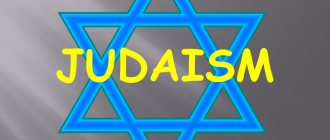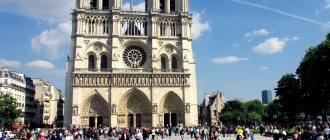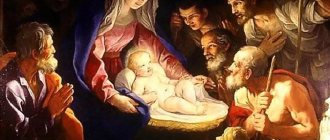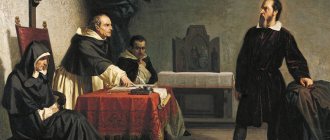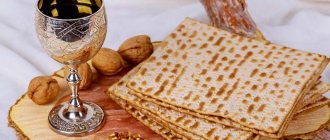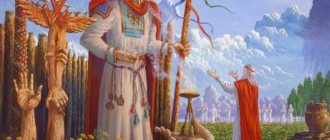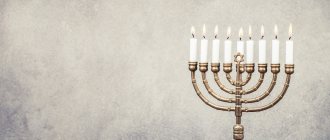It is a monotheistic religion based on the belief in one God (a personal, indivisible, incorporeal and eternal being), who is not only the creator of the world, but also its constant overseer or guardian. The Lord gave an everlasting covenant to the people of Israel, promising them protection and help in exchange for obedience to his commandments. The religion of Judaism was formed in the second millennium BC, it is the national religion of the Jews. The majority of followers live in the United States (5.6 million) and Israel (4.7 million).
This culture includes several unique languages, each of which produces a vast literature, a comprehensive Jewish philosophy, and a set of social customs and conventions.
The essence of Judaism
Judaism is the oldest religion, which is based on the veneration of the One God as opposed to pagan polytheism. The peculiarity is in its strict ethnic character: it arose and developed within one nation. The religion of the Jews received the name “Judaism” from the tribe of Judah. In the 730s BC, the ten tribes of Israel were destroyed as a result of war. As a result, the tribe of Judah remained the only representative of the Jews. Accordingly, the concepts of “Judaism” and “Jews” became identical.
It is important to understand that Judaism is the oldest Abrahamic (common name for Christianity, Judaism and Islam) religion. It received the name “Abrahamic” in memory of God’s Covenant with Abraham. Because Abraham followed God's call and left his lands, he is promised land and numerous descendants. God reveals himself as the one Creator and proclaims His will to people. God gave Abraham ethical regulations, norms and rules of conduct. They formed the basis of three religions: Judaism, Christianity and Islam.
Orthodox Jews at the Western Wall (Jerusalem)
Books Important for Orthodoxy
The religion of the Jews is Judaism. What kind of religious books do these people have? First of all, we need to talk about the sacred scripture, which is called the Tanakh. Let's look at its components:
- Torah, or "Pentateuch".
- Naviim, 21 books about the prophets.
- Ketuvim. These are 13 books of various religious genres.
Another very important book for Orthodox Jews is the Talmud. This is a set of laws, as well as moral and ethical standards, which believers must strictly follow.
Jewish religion - features
The ancient Jews differed significantly in their faith in the One God from the pagan peoples around them. The pagans worshiped various deities and elements (water, fire, earth, sun, moon). The connection between Jews and pagans was considered unacceptable. The attitude of the Jewish chosen people towards representatives of paganism was extremely intolerant.
Thus, the biblical book of Exodus says: “Be careful not to enter into an alliance with the inhabitants of the land into which you will enter, lest they become a snare among you. Destroy their altars, break down their pillars, cut down their sacred groves, [and burn the images of their gods with fire], for you must not worship any god other than the Lord [God], because His name is Jealous; He is a jealous God” (Ex. 34:12-16).
The religion of the Jews is based on the books of the Old Testament - the Tanakh, where a special place is occupied by the Pentateuch of Moses - the Torah. Jews also claim that along with the written text, Moses, in communicating with God, received the Oral Torah (Mishna), which was passed on for a long time from mouth to mouth.
In the 3rd century, explanations were written for the Written Torah based on the Mishnah. This multi-volume book was called the Talmud. It contains all the rules and laws that all Jews must strictly adhere to. This includes not only religious treatises, but also ethics, morality, and laws. According to Jewish law, only Jews have the right to read and interpret the Talmud.
The external symbol of Judaism is the Menorah, the seven-branched candlestick mentioned in the Bible. It was in the Tabernacle and in the Jerusalem Temple until its destruction. It symbolizes God leaning on the Tree of Life.
Since the 19th century, the Jewish religion received the symbol of the Six-pointed Star, it is also called the Star of David.
In the design of synagogues, images of the Tablets of the Covenant are actively used; in Hebrew they are called “luchot ha-brit”. These are two stone slabs on which the 10 Commandments are written.
Halakha is an integral part of the legal system of the State of Israel
The religious tradition has been maintained in Israel for thousands of years. That is why Judaism penetrates into all spheres of life in the country. For example, halakha is an integral part of the Israeli legal system. An example of this is the field of family law, namely the institutions of marriage and divorce with related issues.
Jewish Christians
All of them are under the jurisdiction of religious courts in accordance with the law of the Mandate era. In addition, according to laws passed by the Knesset, the authority over matters of personal status of Israeli citizens depends on their religious affiliation.
This provision directly concerns municipalities and village councils in the country. The councils have religious courts that resolve most disputes regarding personal civil status.
The Israeli Supreme Court building in Jerusalem. Secular issues of law in Israel are resolved by a system of secular courts, headed by the Supreme Court. Photo: upload.wikimedia.org
The religious right is dominant in Israel. For example, the Old Testament is used in the activities of religious courts, the same applies to the Talmud and the Torah.
In addition, it is impossible to marry in the country if it is not recognized by one of the four main faiths. Non-believers and non-commandment Jews according to Halakha can marry according to Jewish religious law.
A separate ministry has been created to control religious institutions in Israel.
The Ministry of Religious Affairs in Israel has existed since the founding of the State of Israel. Its task is to exercise control over the activities of religious institutions.
Religious courts (Jewish, Muslim, Druze and Christian) have jurisdiction over civil status issues, family law issues, and burials. The jurisdiction of rabbinical courts also includes the approval of conversion.
District Rabbinical Court building in Tel Aviv. The approval of conversion, that is, (the conversion of a non-Jew to Judaism), is in the field of their activity. Photo: upload.wikimedia.org
Israeli rabbinate courts approve conversion, that is, the conversion of a non-Jew to Judaism. Legal scholars say at the same time that Halakha is not identical to the legal system of the Israeli state.
This is manifested in the fact that when the court needs to make a decision on any issue, first of all, the search for a solution is carried out among the laws of the State of Israel, then among the laws of the British Mandate, and lastly, among Jewish primary sources (Talmud, Halacha, etc.). d.).
History of the development of Judaism
The history of the development of Judaism can be divided into four periods.
Biblical period
The religion of the Jews begins its history from the creation of the world by God to the exit from Egyptian slavery and resettlement to the Promised Land - Israel. During this period, Abraham entered into the first Covenant with God, in which he recognized God as One. Moses received the 10 Commandments from God during his 40-year wandering in the desert. On their basis the moral and practical life of the Jewish people was built.
Temple period
A period that lasted about 1500 years and ended around the 2nd century BC. e. It was during this period that the belief in one God received the name “Judaism.” The formation of the Jewish state with its center in the city of Jerusalem dates back to this period of time. During the reign of King Solomon, the Temple of God was erected, where the Ark of the Covenant was transferred and kept. The Jerusalem Temple was considered the main spiritual center for the Jews. During the temple period, the temple was destroyed and rebuilt several times. This time period ended with the destruction of the Temple and the enslavement of the Jews by the pagan Romans.
Talmudic (rabbinic) period
Historians disagree on whether these periods should be separated, and there are also no clear time boundaries. In the 2nd – 4th centuries, the Scriptures and the Oral Torah were ordered and the Talmud was compiled. As a result, the Jewish faith in the One God was transformed into a set of regulations, rituals, norms and foundations that must be strictly observed by representatives of Judaism. The creation of the modern form of Judaism occurred precisely during this time period. In the 6th – 8th centuries, temple services were replaced by general meetings in synagogues, during which prayers were read. Such meetings are led by teachers who have thoroughly studied the Torah and Talmud - rabbis.
Modern period
It originates from 1750 to the present. The modern Jewish religion practiced by modern Jews is not exactly the same as that which was given to the Israelites through Moses and the Prophets. It also differs from Judaism before the coming of the Messiah - Jesus Christ. Today they hold to beliefs that they themselves have invented by distorting the Holy Scriptures, deviating from the true spirit of Moses and the Prophets. The first faith is truly revealed by God and is a preparatory step to Christianity. But the New Jewish one is the fruit of human inventions. At the same time, the Jewish Diaspora remains as united as possible.
Historical information
After the fall of Jerusalem, Babylonia (modern Iraq) would be the center of the religion of Judaism for over a thousand years. The first Jewish communities in Babylonia arose from the expulsion of the tribe of Judah to Babylon by Jehoiakim in 597 BC, and after the destruction of the Temple in Jerusalem in 586 BC. Many more Jews migrated to Babylon in 135 AD after Bar Kochba's revolt. Babylonia became the center of Jewish life until the 13th century. By the first century it was growing rapidly, with a population of 1 million Jews, which increased to 2 million, accounting for about 1/6 of the world's Jewish population in that era.
During the European Renaissance and Enlightenment, significant changes occurred in the community. The Haskalah movement was accompanied by the broader Enlightenment, as Jews in the 18th century began campaigning for liberation from restrictive laws and integration into wider European society. Secular and scientific education was added to the traditional religious training received by students, and interest in national identity, including a revival in the study of history and Hebrew, began to grow.
In the 1870s and 1880s, Jews in Europe began to more actively discuss immigration to Israel and the possibility of re-establishing a Jewish nation in their national homeland, fulfilling biblical prophecies regarding Shivat Zion.
In 1933, with the rise to power of Adolf Hitler and the Nazi Party in Germany, the situation for the Jews became difficult. Judaism and its supporters were severely condemned. Economic crises, racially anti-Semitic laws and fear of impending war caused many Jews to flee Europe to Palestine, the United States and the Soviet Union.
Today, Israel is a parliamentary country where more than half the population is Jewish. The largest Jewish communities are in Israel and the United States, with major communities in Europe, Russia and Canada.
Great Founder and Prophet
The founder is considered to be the prophet Moses. According to the Book of Exodus, Moses was born when his people, the Israelites, were increasing in number. This worried the Egyptian pharaoh. Therefore, he ordered the killing of newborn Israeli boys. Moses' mother hid him secretly. Through the pharaoh's daughter, the child was adopted as a foundling from the Nile River and grew up with the Egyptian royal family. After killing an Egyptian slave owner, Moses fled to Midian, where he met the Angel of the Lord speaking to him on Mount Horib.
God sent Moses to deliver the Israelites from slavery. Moses led the Israelites from Egypt to the biblical Mount Sinai, where he was given the Ten Commandments from God, written on stone tablets. Before his death, Moses left a successor, Joshua, blessing him.
Unique Jewish traditions
Jewish funerals took place in compliance with rather complex rituals. All household utensils and furniture were removed from the deceased’s home, and relatives tore their clothes. Neighbors had to empty out all their water supplies. In modern Judaism, the ceremony has been simplified and prayers are read over the deceased. It is not customary to bring flowers to a grave; according to custom, a pebble is placed on it.
At the end of autumn or beginning of winter, the holiday of Hanukkah is celebrated in memory of the miracle that happened in the Temple. When the Greeks destroyed and desecrated it, the Jews were able to find only one vessel with pure oil for the lamp. Its contents would only last for one day of burning. But a miracle happened: the lamp burned for eight days. In memory of this event, lamps are lit on the windows of houses at dusk. Moreover, one light is added every day until the number reaches 8. At this time there is no fasting and they do not mourn the dead.
Traditional Jewish dishes
Jewish cuisine is one of those strictly regulated by religious customs. Because of the need to adhere to Torah-bound traditions, even the short list of foods forbidden to Jews is quite broad. However, the Jewish menu is dominated by dishes that are distinguished by excellent taste and high biological value; they contain easily digestible and beneficial substances for the body.
TOP 10 most popular Jewish dishes:
- Gefilte fish. This national Jewish dish takes pride of place on the table on any holiday, and it is always prepared on Rosh Hashona.
- Forshmak (translated from Hebrew as “anticipation”). A pate made from herring, boiled potatoes, hard-boiled eggs and onions.
- Pastrama. Beef with spices and seasonings, baked in the oven in a large piece. Served cold.
- Challah. Festive bread made from rich yeast dough.
- Matzo. A thin unleavened flatbread eaten at Easter instead of bread.
- Pashtida. A special type of jellied pie filled with meat, sausage, fish or vegetables.
- Cholent (khamin). An ancient Jewish dish, a meat stew made from beans or beans. Hamin is prepared on Friday to be eaten on Saturday, when Shabbat requirements prohibit cooking food.
- Falafel. A snack in the form of deep-fried balls of ground chickpeas or beans.
- Kugel. A casserole made from grated potatoes, rice or noodles with meat or cracklings.
- Tsimes. A dessert dish made from fried carrots, prunes, dried apricots, raisins, honey and cinnamon.
Basic dogmatic principles of Judaism
What do Jews profess? Jews believe in one God, which they repeat daily when reading the Shema prayer: “Hear, O Israel. The Lord is our God, the Lord is One.” They also claim that man is created in the image and likeness of God.
The life of Jews is based not so much on doctrinal dogmas as on rules and norms of behavior. The essence of Judaism lies in strict observance of all external and ritual regulations.
A special place in Judaism is given to the assertion that the Jewish people are chosen by God and stand above other people in the world. The Talmud says: “just as man stands high above animals in the world, so Jews stand high above all peoples in the world.”
Jews, on principle, do not spread their creed, believing that Judaism is the national religion of the Jews and is the creed of the chosen people. The covenant was concluded only with the Jews, so there is no need to convert representatives of other nations and faiths.
Jews believe in the coming of the Messiah. At the same time, they do not recognize Jesus Christ as the anointed one of God for the reason that He did not have power and was persecuted. They marked the coming of the Messiah with the arrival of an earthly ruler who would occupy a special political place and conquer all nations for the Jews to rule over them.
In addition to Jews, Christians and Muslims live in Israel
When answering the question: what kind of God does the Jews have, it is necessary to remember that Christians and Muslims also live in the country. Therefore, the second religion after Judaism will be Christian or Muslim. There are 150-200 thousand Christians in the country.
150 - 200 thousand
There are about that many Christians in Israel, most of them Catholics
In 2000, there were 197 Christian churches and places of worship operating in Israel, belonging to 72 different Christian denominations.
Basilica of the Annunciation, Nazareth. Catholics make up the majority of Israeli Christians. Photo: upload.wikimedia.org
In the country you can meet representatives of all Christian denominations. Catholics, however, make up the overwhelming majority. Most of them are Uniates. In total, as of 2010, there were 90,000 Catholics in Israel.
There are approximately 150 - 200 thousand Christians living in Israel, most of them Catholics.
There are approximately 30,000 Orthodox and ancient Eastern Church believers living in Israel.
30 thousand
there are so many Orthodox and believers of ancient Eastern churches in Israel
At the same time, Israeli Orthodoxy is represented by the Jerusalem Orthodox Church. Officially it is called the Patriarchate of Jerusalem or the Greek Orthodox Patriarchate of Jerusalem.
This is the oldest autocephalous local Orthodox church. It occupies 4th place in the diptych of autocephalous churches and is governed by the Patriarch of Jerusalem and the Holy Synod. Protestants are also present here. These are Anglicans, Lutherans, Presbyterians, Adventists, Baptists, Holiness Movement supporters, Jehovah's Witnesses, Mormons, etc.
Al-Aqsa Mosque in Jerusalem. In the territory of the State of Israel, Islam is considered the most popular religion. Photo: upload.wikimedia.org
For Muslims, Jerusalem is considered the third most important holy city after Mecca and Medina. This is why Islam is considered the second largest religion in Israel. Moreover, from the 8th century to the mid-early 20th century, Islam prevailed in the country.
This was due to the Arab conquest of the country. Modern Muslims in the state are represented mainly by Israeli Arabs. As of 2021, their number is 16.8% of the country's population.
Simple conclusions
The God of the Jews, Yahweh, told his disciples that they needed to know and honor the Torah. This is exactly what the followers of this movement do. For the most part, they learn. Men go to work only in adulthood. In their youth and the first couple of years of marriage, such men devote all their time to studying. That is why this trend is not too favored by Jews. After all, taxpayers’ money goes to support such families (where often men, and women, of course, do not work). And the Orthodox, in turn, are confident that other Jews do not adhere to the sacred laws of the Torah.
Offshoot: Ultra-Orthodox
It is important to note that there is such a widespread movement today as ultra-Orthodox Jews. In Judaism, this movement bears the well-known name Hasidism. This movement originates in the 18th century. Religion here is closely related to mysticism and exaltation. The main ideas of Hasidim are as follows:
- God is everywhere and always. You need to serve him every minute, in big and small matters.
- We must serve God exclusively in joy.
- Any sin can be expiated.
Daily prayer is very important for Hasidim. It is pronounced in an elevated emotional mood. Its goal is to have as close a relationship with God as possible.
Among the traditional occupations of Hasidim are the construction business (real estate), trade, financial market, and mediation. Quite often Hasidim deal with diamonds. These are quite rich people who rule the world.
Hairstyle
Orthodox Jews also have a special hairstyle. And to be more precise - with curls that either hang down to the shoulders or are laid behind the ears. They are called sidelocks. Not all representatives of Judaism wear such hairstyles, but only those who are zealous about the following commandment of the Torah: “Do not round the edges of your hair and do not trim your beard...”
It is worth noting that there are a huge number of interpretations of this commandment. However, Orthodox Jews take it as literally as possible. Which leads to the appearance of sidelocks and long beards.
